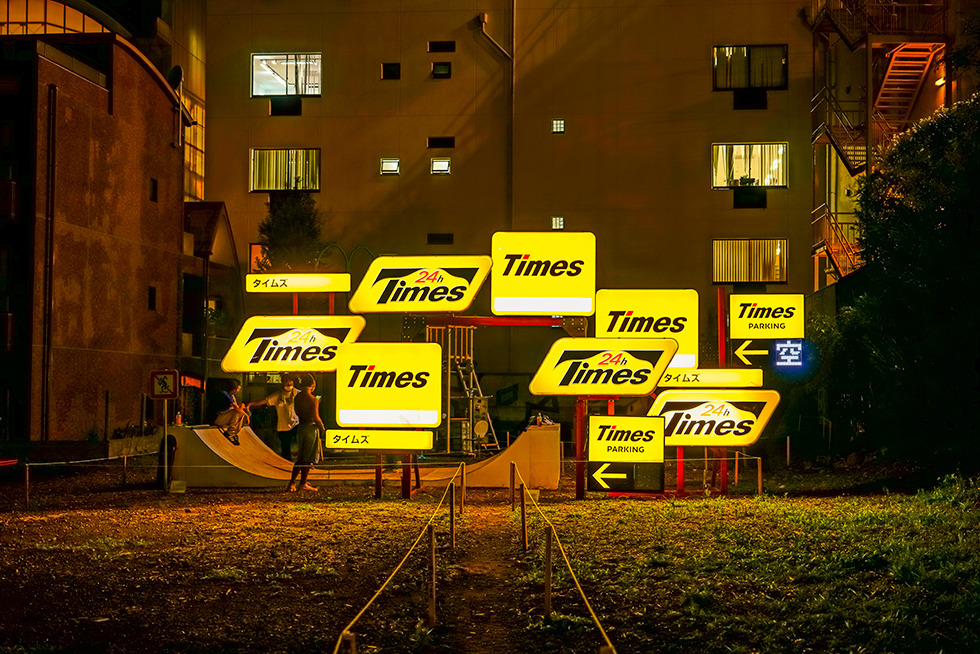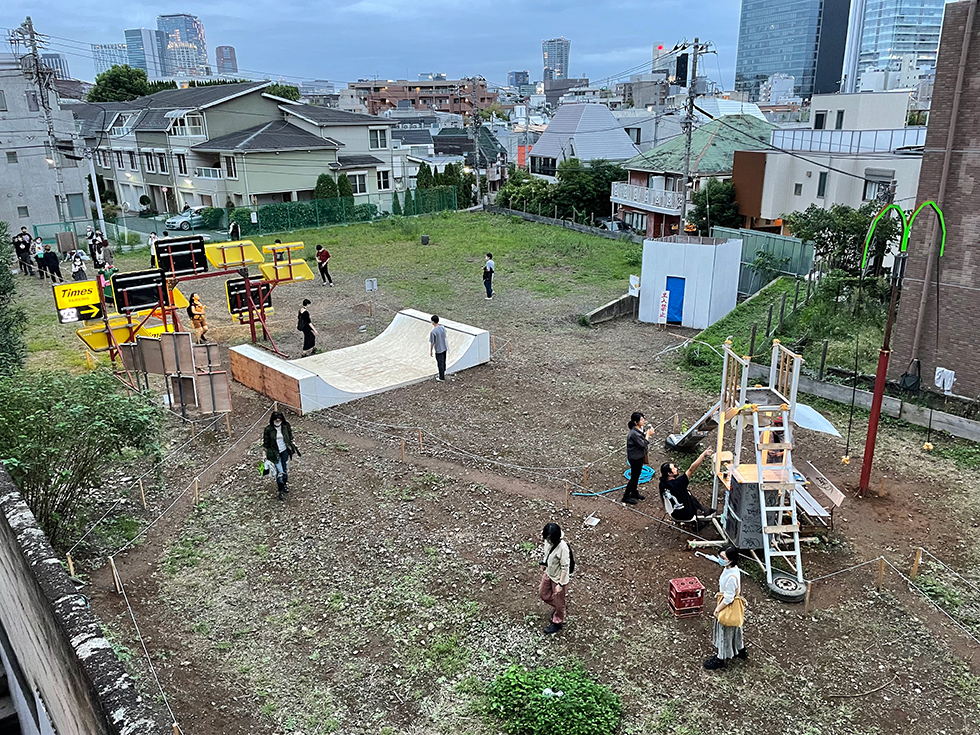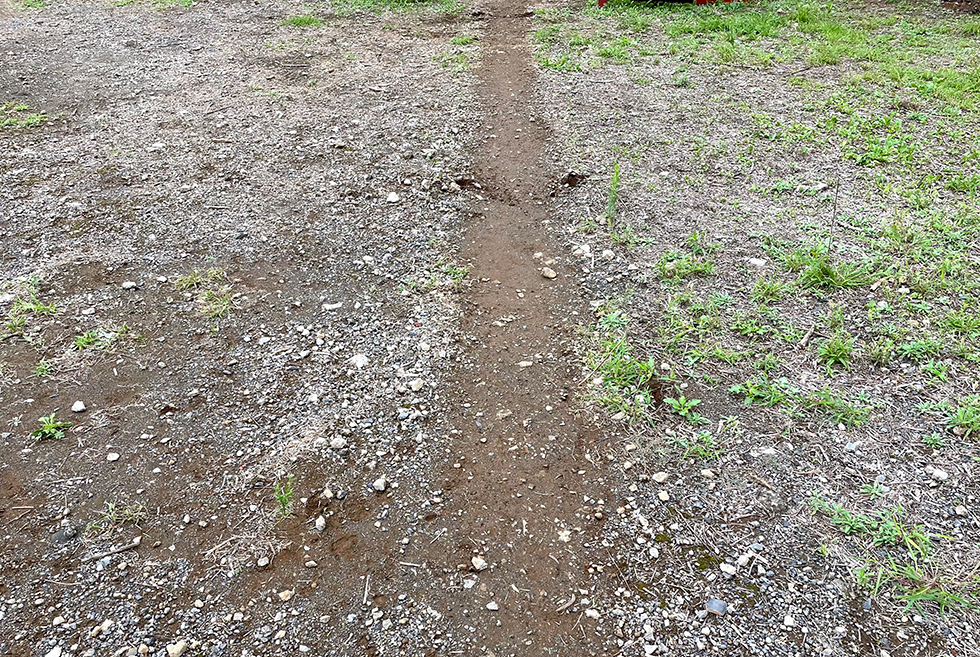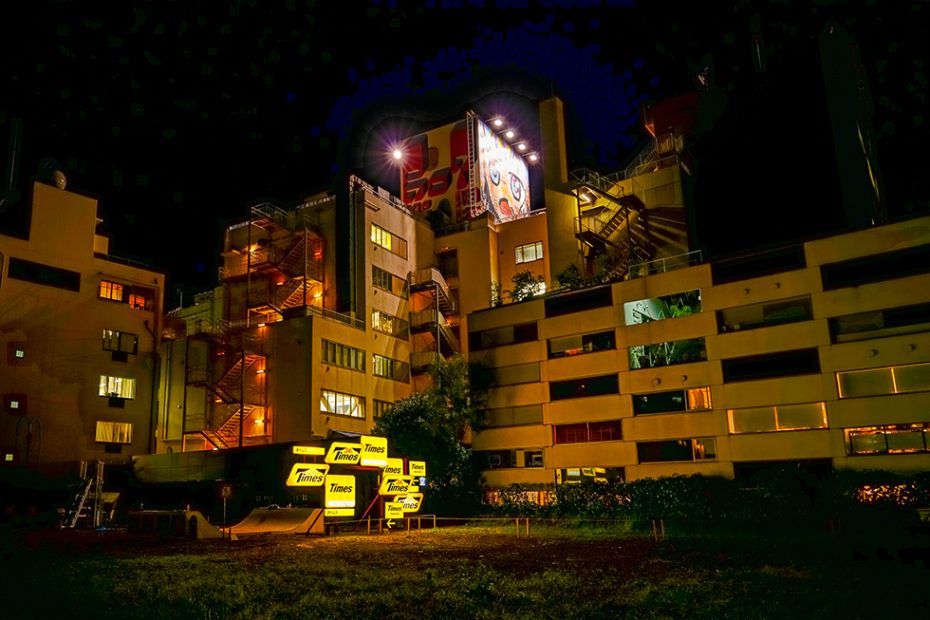photo by Shuji Goto/ Photo courtesy: Watari-um
This artwork was exhibited at the outdoor exhibition “RIPPLE ACROSS WATER 2021″ organized by the Watari-um Museum. “RIPPLE ACROSS WATER 2021″ was an exhibition held in the surrounding area of the Tokyo Olympics and “time gate” was installed in an empty lot located just a few minutes’ walk from the Olympic Stadium. This empty vacant lot used to be a public housing complex covered in graffiti, and it holds many memories for us. The plan for this empty lot was to turn it into a parking lot for the Olympics, but due to the chaos caused by the COVID-19 pandemic, it remained vacant and was made available for the exhibition.

photo by Shuji Goto/ Photo courtesy: Watari-um
f you walk around Tokyo for even 10 minutes, you are bound to come across signs for coin parking lots with the word “TIMES.” The reason why there are so many coin parking lots in Japan is that they make effective use of the “in-between time” during the process of rebuilding buildings. In addition, the strengthening of measures against illegal parking through the amendment of the Road Traffic Act in 2006 led to Tokyo in particular being filled with coin parking lots. (12,000-18,000 JPY for standard car)This artwork represents the “in-between time” of the city, symbolized by the signs of coin parking lots, and creates a gate, representing the “entrance to the future city.”

Passing through the time gate, you will enter a space where installation artworks created by five other artists are installed, apart from ourselves. The concept of this exhibition is to “transform the empty lot into a park,” and it featured Takahiro Morita’s skate ramp artwork and a community space shaped like a play equipment by Namazu, among others. The exhibition venue became a place of relaxation for local residents and visitors. The future that lies beyond the time gate is a future where the empty lot is not entirely turned into a parking lot but temporarily utilized as a community space. During the exhibition period, we also held a pop-up event at the dance club “BONOBO,” where participating and supporting artists sold zines, T-shirts, and other items.

Entrance to BONOBO / The exhibition here open for two days only.
The exhibition was fraught with unexpected troubles. Firstly, the land value of the vacant lot was too high, limiting the area we could borrow. We had to define specific access areas like a maze and use strings to divide the space. Additionally, when we were planning to install the artworks, the Tokyo Metropolitan Government had cleared out almost all the plants in the area, resulting in a space that was completely different from what we had anticipated. Even after the exhibition started, there were numerous problems. The teenage graffiti crew Tokyo Zombie was on the black list of graffiti offenders maintained by the sponsor, Shibuya Ward Office. Without any room for negotiation, municipal officials removed their artwork. In the end, they created new pieces under a different name and participated in the exhibition again. Takahiro Morita’s skate ramp, which was designed with the concept of users creating their own rules, faced numerous complaints during the exhibition. Consequently, the rules had to be constantly modified, and towards the end of the exhibition, skateboarding was almost impossible. However, it wasn’t all negative. For instance, the neighboring longstanding beauty salon kindly provided electricity and water for the exhibition. Local residents and skaters repeatedly visited the exhibition, and nearby restaurants offered meals and drinks. The exhibition became a true park-like space, encompassing both positive and negative aspects. After the exhibition ended, only the paths people walked on remained in the vacant lot.

